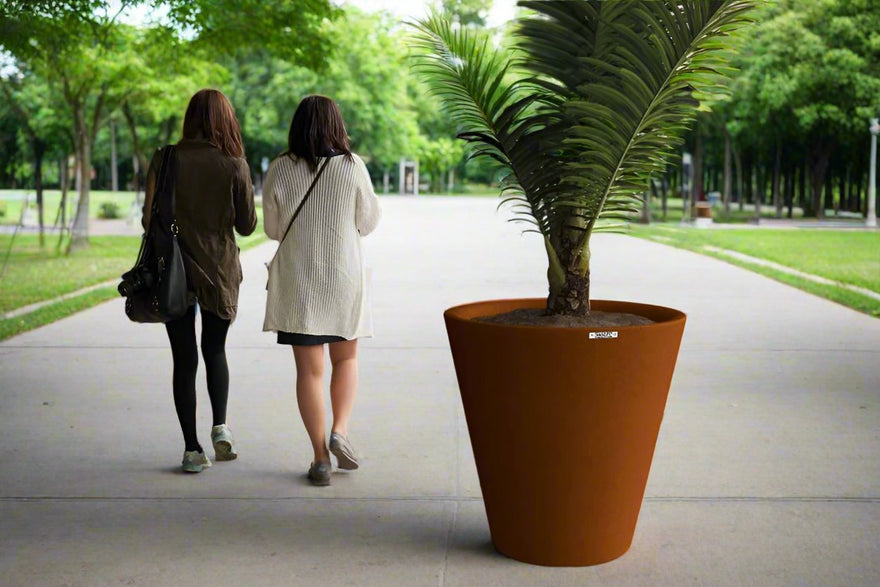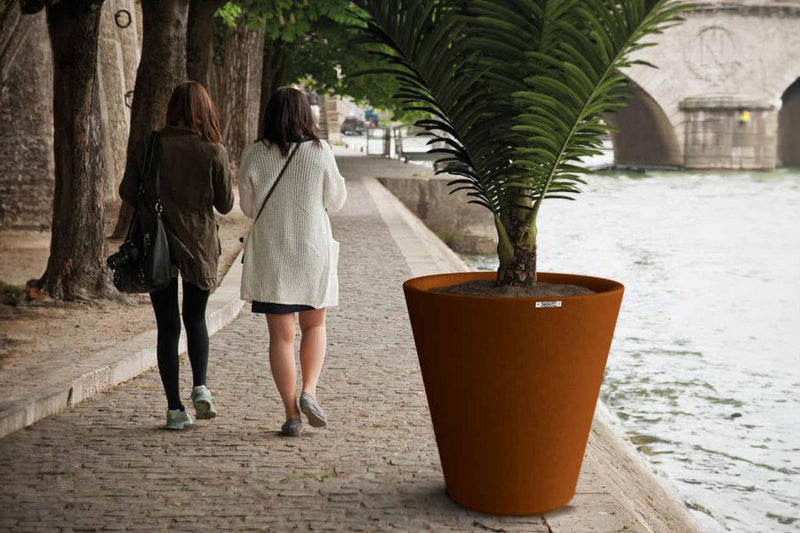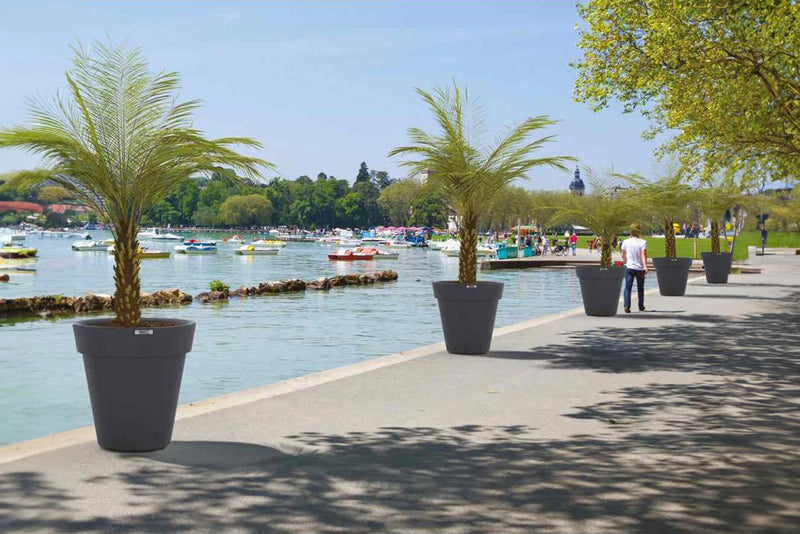Getting The Best Large Planter Pot For Your Outdoor Space
Consider these key factors when choosing from our range of large outdoor flower pots and planters:
Material and Durability
The design and material choice of large outdoor planters are very important as these factors affect plant growth and maintenance. Different plants prefer different pot materials. Plants that need good drainage or air circulation prefer a clay pot with drainage hole(s), whereas other plants that do not need as much drainage thrive in plastic.
Size and Volume
How large does your planter need to be? Consider the mature size of the plants that will occupy the planter, making sure to provide enough room for healthy root development. Larger planters provide more soil volume, which supports healthier plant growth and reduces maintenance.
Drainage
Much of our range of large flower planters for outdoor use has built-in drainage. Choose large garden pots with ample drainage to minimise maintenance and root rot.
Mobility and Placement
Will the planter ever need moving? Plastic and fibreglass planters are relatively light, but extra-large plant pots generally are extremely heavy and difficult to move without wheels when full. Make sure your large outdoor planter is placed in an area that fulfils the plants' needs, providing enough sunlight and protection from harsh weather conditions throughout the year.
Insulation and Protection
Depending on the location and environment in which the planter will be installed, your plants may benefit from insulation, which can help maintain a stable root environment. Large planters provide some level of insulation to protect plant roots from extreme temperatures. Materials like plastic and clay offer natural insulation, whereas metal planters might benefit from extra insulation measures.
Maintenance
Some materials require more maintenance than others; consider planters that fit your space's maintenance capabilities. Bear in mind, too, that the plants themselves will need varying levels of maintenance too (depending on what’s growing), even if automated watering systems have been installed!
Sustainability
To reduce your environmental impact, look for planters made from more eco-friendly materials, such as recycled plastics and sustainably sourced wood to reduce your environmental impact.








